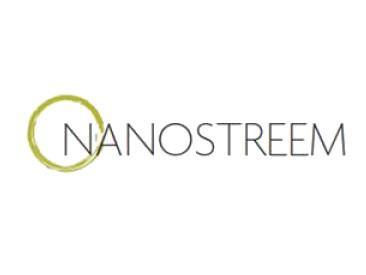The overall objective of Nanostreem is to support and coordinate activities in relation to research and development of novel nanoscale or nanofunctionalized materials enabling further increase of semiconductor manufacturers’ productivity and innovation.
Together, the consortium will build an inventory of nanomaterials that are used in today’s and future semiconductor manufacturing processes, evaluate methodologies for risk assessment to protect human health and the environment and set up comprehensive training and communication efforts. The project consortium will come up with recommendations for the use of nanomaterials in semiconductor processing and risk management practices to prevent or minimize exposures and releases, and an assessment of the applicability of the current regulatory framework for these specific materials.
The project will also enable the semiconductor industry to share and benchmark its approach of applying combined risk assessment with other sectors that face similar challenges, such as the pharmaceutical and paint industry.
Funding and duration
- H2020-ICT-25-2015 CSA
- November 2015 – November 2018
Website
Operating principles
By comparing various risk assessment approaches and sharing good practices, the European NanoStreeM project will contribute to the improvement of the awareness and safety of workers in the semiconductor industry, and to the minimisation of the impact on the environment. The goal of this project is on gain insight in the potential pathways of exposure to and release of nanomaterials, compile risk management practices enabling better risk governance, and dissemination of these results to the European semiconductor industry. Additional application of the combined risk assessment and gap analysis framework also will help further refine the assessment approach for nanomaterials.
Documents, procedures & best practices
As part of the NanoStreeM project, VITO will compare the various risk assessment methodologies (including gap analysis) that are being used within the industry. We will also review state of the art air sampling and monitoring methodologies for clean room environments and make recommendations for use of exposure monitoring complementary to risk and control banding in the semiconductor industry.The initial study phases for the project include constructing a profile of the exposure settings, reviewing relevant literature on standards for air sampling applicable for clean room and semiconductor environment, assessing workplace handling practices and control measures and determining potential pathways of exposure or release in air and process waste streams in the semiconductor industry. The approach also will include a review of current best practices and recommendations to prevent or minimize exposures and releases, including design considerations, engineering controls, workforce training, administrative procedures, personal protective equipment and waste management practices.
Operational objective
The project consortium sets forth the following high level objectives::
- Assembling inventories of materials, research topics and directions relevant for nanomaterial use and exposure in nano- electronics manufacturing.
- identifying gaps in the knowledge available to the semiconductor industry and the methodologies of risk assessment of nanomaterials (either engineered an purposefully used or incidentally released) during manufacturing.
- Usage of obtained results for better risk governance, dissemination and outreach.
- Consortium partners will identify safety training as a crucial aspect of prevention of accidents and exposure.
- Consortium partners will also seek interaction with stakeholders to assist them in adopting good governance practices for the nanohazard and .
NanoStreeM to asses exposure and risks of nanomaterials in semiconductor manufacturing
Engineered nanomaterials (ENMs) are currently used in hundreds of commercial products and industrial processes. To maximize the benefits of nanotechnology and avoid unwanted consequences, additional data are needed to better understand potential health risks and necessary control measures across the life cycle stages of novel nanoscale or nano functionalized materials.
By comparing various risk assessment approaches and sharing good practices, the European NanoStreeM project will contribute to the improvement of the awareness and safety of workers in the semiconductor industry, and to the minimisation of the impact on the environment. The goal of this project is on gain insight in the potential pathways of exposure to and release of nanomaterials, compile risk management practices enabling better risk governance, and dissemination of these results to the European semiconductor industry . Additional application of the combined risk assessment and gap analysis framework also will help further refine the assessment approach for nanomaterials.
As part of the NanoStreeM project, VITO will compare the various risk assessment methodologies (including gap analysis) that are being used within the industry. We will also review state of the art air sampling and monitoring methodologies for clean room environments and make recommendations for use of exposure monitoring complementary to risk and control banding in the semiconductor industry.
The initial study phases for the project include constructing a profile of the exposure settings, reviewing relevant literature on standards for air sampling applicable for clean room and semiconductor environment, assessing workplace handling practices and control measures and determining potential pathways of exposure or release in air and process waste streams in the semiconductor industry. The approach also will include a review of current best practices and recommendations to prevent or minimize exposures and releases, including design considerations, engineering controls, workforce training, administrative procedures, personal protective equipment and waste management practices.
Fourteen partners from six European countries join forces in NanoStreeM. Together, the consortium will build an inventory of nanomaterials that are used in today’s and future semiconductor manufacturing processes, evaluate methodologies for risk assessment to protect human health and the environment and set up comprehensive training and communication efforts. The project consortium will come up with recommendations concerning the use of nanomaterials in semiconductor processing and risk management practices to prevent or minimize exposures and releases, and an assessment of the applicability of the current regulatory framework for these specific materials. The project will also enable the semiconductor industry to share and benchmark its approach of applying combined risk assessment with other sectors that face similar challenges, such as the pharmaceutical and paint industry.
The NanoStreeM project (Nanomaterials: strategies for safety assessments in advanced integrated circuits manufacturing) receives funding from the European Union’s Horizon 2020 Research and Innovation Programme under grant agreement n° 688794.
